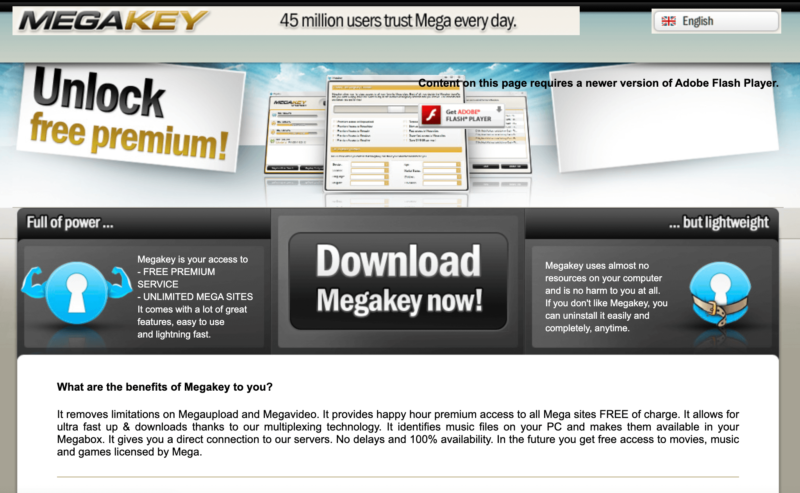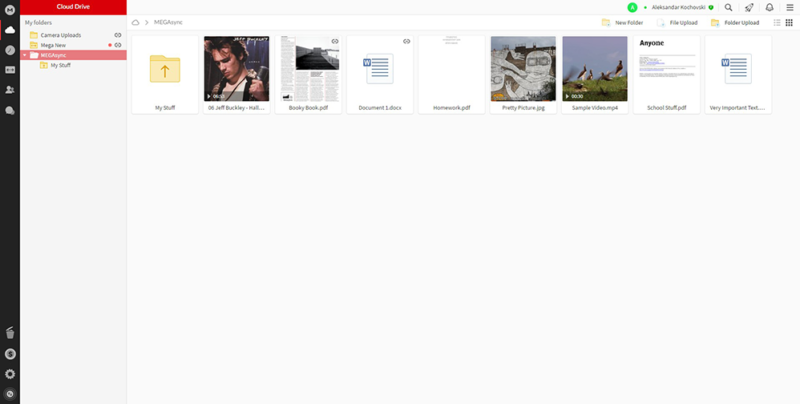What Is Megaupload? A Full History of Kim Dotcom’s File-Sharing Website in 2025
The tale of Megaupload and Kim Dotcom now stretches across three decades, with no apparent end in sight. Here, we’ll summarize the whole thing and try to make heads or tails of what’s happened, from the basics of what is Megaupload to what comes next in the tech industry.
There have been many dramatic stories over the years involving the internet and copyright infringement, but few are as notorious as that of Megaupload and Kim Dotcom. It’s one hell of a story, but one that’s complicated and often misunderstood. Join us for an answer to the question of “what is Megaupload?” as we look at what happened to the website and what comes next.
Key Takeaways:
- Megaupload was one of the leading file-sharing sites on the internet until its takedown in January 2012.
- The site’s founder, Kim Schmitz, legally changed his name to Kim Dotcom around the same time he founded Megaupload in 2005.
- Dotcom has waged an ongoing legal battle for more than a decade to avoid extradition to the United States for charges of copyright infringement, wire fraud, racketeering and money laundering.
- Despite sharing part of its name with Megaupload and being founded by the same person, MEGA.nz retains none of its ties to the now-defunct file-sharing site.
As with most legal matters, the details of the case against Kim Dotcom are dense and fairly complex. In this article, we’ll give you a quick explanation of what Megaupload is and the history of its founder before diving headfirst into the confusing world of legal jargon, arrests, convictions and appeals, as we try to make sense of it all.
What Is Megaupload?
Megaupload was a popular file-sharing website from the mid-to-late 2000s, until the FBI seized its servers and shut it down for hosting copyrighted content.
The website was founded in 2005, with its headquarters located in Hong Kong. Throughout its seven years of existence, more than 175 million people registered an account, and the site received over a billion page views.9
10,000+ Trust Our Free Cloud Storage Tips. Join Today!

- Demystify cloud storage terminology and key concepts in plain language
- Discover easy-to-implement techniques to securely backup and sync your data across devices
- Learn money-saving strategies to optimize your cloud storage costs and usage
At its peak, Megaupload was the 13th most visited website in the world and stored roughly 25 petabytes (or 25,000 terabytes) of data on its servers. Multiple countries blocked access to the site over the years, including Malaysia, India and — somewhat strangely — Hong Kong, where the company incorporated. 10 11 12 13
Aside from the main sharing site, Megaupload also ran a number of other services, such as Megakey.com and Megabox.com, the latter of which was billed as an iTunes competitor that ran directly in the user’s web browser.

Megaupload: Copyright Holders’ Nightmare
For years, Megaupload was one of the most popular file-sharing sites in the world, as it required no account to either upload or download files. Obviously, this made it a popular spot for copyright infringement and piracy, with all sorts of copyrighted material like movies, music, TV shows, books and other video content being shared.
This made it similar to torrenting as an avenue for internet piracy, but without the decentralized structure to keep it safe from government interference. Inevitably, the U.S. government came knocking. In January 2012, the FBI filed an indictment against the site and its founder, Kim Dotcom, and seized its servers, shutting down the site for good. 14
Keen readers might notice that January 2012 is just around the time that the infamous Stop Online Piracy Act was making its way through the U.S. Congress. Although the bill, known as SOPA, was effectively killed by public opposition, there was no saving Megaupload from its demise.

Megaupload & Leaseweb Servers
Megaupload’s servers were not located in the United States but rather leased through a European server company called Leaseweb and hosted in the Netherlands. This was no impediment to the FBI, though, as Dutch law enforcement helpfully confiscated a portion of the hardware and shipped it to the United States for analysis. 8
The remaining 630 servers owned by Leaseweb but containing files from Megaupload were kept in storage for a year before the company wiped them, citing lack of communication from Megaupload as the reason for doing so.8
For what it’s worth, Kim Dotcom claims that his personal files were stored on these servers and that in wiping them, Leaseweb had deleted potentially exonerating evidence that he intended to use during the criminal proceedings against him.8
Although the case against Dotcom has stalled for close to a decade, Megaupload itself was irrevocably dismantled. However, given the name recognition of the website, a new service called MEGA.nz soon appeared.
MEGA.nz vs Megaupload
Somewhat confusingly, a service bearing Megaupload’s name (or at least part of it) still exists. However, as of 2021, the connection between MEGA.nz (read our MEGA review) and the defunct Megaupload is practically nonexistent.
MEGA, like Megaupload, was initially founded by Kim Dotcom in 2013, but he quickly stepped down as CEO of the company. By 2015, he had no more connection to the file storage service, although he continues to promote MEGA on his website, kim.com.

Unlike Megaupload, which functioned entirely as a file-sharing site, MEGA is a fully fledged cloud storage service. That means that while you can still use MEGA to share files, its primary focus is personal file storage, just like other cloud storage services such as Dropbox, pCloud or Sync.com.

Since the end of his involvement with MEGA, Kim Dotcom has made various claims about the service. This includes the assertion that the company was forced into a hostile takeover by Chinese investors, and that the New Zealand government has since confiscated the shares from said investors, now exercising direct control over the service.
The claims get more outlandish from there, with perhaps the most eyebrow-raising one being that the service is run by a shadowy collection of Hollywood executives. MEGA itself has repeatedly denied these allegations, and Dotcom has been unable to provide any proof.
How Does Megaupload’s History Affect MEGA?
Although Kim Dotcom has long since departed the company, and not on the best of terms at that, Megaupload has left clear fingerprints on the modern cloud storage service. It has always marketed itself as a privacy-oriented company, and while this is great for marketing, it’s far from the only reason for MEGA to take a zero-knowledge approach.
At the end of the day, the lack of zero-knowledge encryption (and thus, plausible deniability) is what brought Megaupload down. Because the site couldn’t reasonably claim that it was unaware of the copyrighted and illegal material hosted on its servers, it became exposed to legal prosecution.
It’s doubly unfortunate for MEGA that a 2022 report by cryptographic experts found serious problems with its encryption process, resulting in scenarios where entities in control of MEGA’s infrastructure could extract users’ encryption keys. 27
Who Is Kim Dotcom?
As we mentioned briefly in the last section, Kim Dotcom is the notorious founder of Megaupload. Born to a Finnish mother and German father in Kiel, Germany, Kim Schmitz legally changed his surname to Dotcom in 2005, the same year that he founded Megaupload in Hong Kong.1

Early Legal Problems & Hacking Allegations
Dotcom’s first run-in with legal authorities was all the way back in the ‘90s as a hacker under the hacker handle “Kimble.” He entered the public spotlight in Germany for claiming that he had bypassed the security measures of NASA, the Pentagon and Citibank.2
His first arrest in 1994 was a bit less glamorous — he was arrested and held in custody for a month for selling stolen phone numbers.3
Seemingly unfazed, Dotcom was arrested again in 1998, this time for additional hacking charges and convicted on multiple counts of computer fraud and data espionage. Considered a minor in Germany at the time of his arrest, he was only given a two-year suspended sentence for what the judge called “youthful foolishness.”4
In 2001, he again ran into legal trouble when he purchased a large number of stocks in a company called LetsBuyIt.com, which was teetering on the verge of bankruptcy. Following his purchase, he announced that he planned to invest 50 million euros in the company, causing the stock price to soar and earning him a profit of 1.5 million euros on his stocks.4
To avoid prosecution for market manipulation, Dotcom fled to Thailand but was nonetheless arrested there and handed over to the German embassy. After being transported back to his home country, he pled guilty to embezzlement and spent five months in jail before receiving yet another suspended sentence.2 5
Move to Hong Kong & New Zealand
Probably fed up with the German authorities, he finally moved to Hong Kong in 2003, where he incorporated various companies, including Megaupload. He eventually moved to New Zealand in 2010, receiving residency status after investing 10 million New Zealand dollars in the economy.2 6
While living in New Zealand, Dotcom got entangled in a political scandal revolving around his financial contributions to John Banks, the mayor of Auckland at the time. Banks was initially convicted for this, though he was later exonerated. Dotcom faced no legal consequences for his involvement in the scandal.7
January 2012 Indictment
When the January 2012 indictment from U.S. authorities rolled around, Dotcom was still residing in New Zealand, and thus, protected from immediate arrest by the FBI. Nevertheless, local law enforcement raided his residence two weeks later and arrested Dotcom and several of his associates — including Mathias Ortmann, CTO and co-founder of Megaupload — though a judge quickly released them on bail. 15 16
Local New Zealand law enforcement handed several of Dotcom’s hard drives over to their FBI counterparts, presumably to be used as evidence in a trial down the line — a move that was later determined illegal by the New Zealand high court.17 18
Through all the legal twists and turns in the following decade, Kim Dotcom remained in New Zealand, making periodic public appearances and headlines, usually regarding his case or the successor to his file-sharing website, MEGA.nz.
The Legal Saga of Kim Dotcom and Megaupload
Before we dive into the legal details of the story of Kim Dotcom and Megaupload, it’s important to point out that we are not lawyers; we can only collect and summarize the legal opinions of actual experts on both sides of the case.
The Prosecution’s Case
The charges brought against Kim Dotcom are varied, but the main thrust boils down to the allegation that Megaupload was fully aware that the website was used for copyright infringement and chose to do nothing about it.19
In fact, the charges claim that the website actively encouraged such behavior by incentivizing users with popular downloads while removing files that received little attention.19
The fact that the website was fully capable of policing the content it hosted is hard to dispute, seeing as it had systems in place to crack down on more nefarious file-sharing activities like child pornography.19
This combined with its apparent knowledge of the illegal activities happening on the site means that it doesn’t qualify for what’s known as the “safe harbor” provision of the DMCA (read our what is DMCA article for more info). The said provision protects websites that host copyrighted content so long as the websites either have no knowledge of it or act to remove the content once aware of it.20
Moreover, the fact that Megaupload’s business model centered around ads means that the company was making a direct profit off the distribution of copyrighted material.19
Aside from the general copyright infringement case, the U.S. prosecutors also included charges of wire fraud, racketeering and money laundering. The latter of which has been especially disputed by Dotcom’s attorneys and other defenders, as it seemingly includes standard web hosting fees paid to the companies from which Megaupload rented server space.19 21
Kim Dotcom Fights Back
Since Dotcom resides in New Zealand, but the warrant for his arrest is in the U.S., the legal battle boils down to whether or not he can be extradited to the United States to face his charges.
It took three years before this extradition request even made it in front of a judge. Then after two months of legal arguments, a district judge in New Zealand decided that the charges against Kim Dotcom made him eligible for extradition due to a “large body of evidence” supporting the case. Dotcom’s lawyers immediately filed an appeal, which resulted in another two years of legal limbo.22
The next major update came from the New Zealand high court, which upheld the previous decision that Dotcom could be extradited but with a pretty significant caveat.23
Since digital copyright infringement is not a crime in New Zealand, the judge concluded that this was not a basis for extradition.23
Dotcom and his legal team celebrated this decision, saying it was a step in the right direction for their case. Fortunately for the U.S. prosecutors, they had also charged Dotcom with fraud, racketeering and money laundering, which the judge said were extraditable offenses.24
As is generally the case with compromise decisions like this one, though, neither side was entirely satisfied, and both filed an appeal pretty much immediately.24
Bad News for Dotcom
That brought both parties to the court of appeal, which made its decision in July 2018. Disagreeing with the high court, the third judge to review Dotcom’s case determined that he could, in fact, be extradited for any of the charges levied against him, including the ones relating to copyright infringement. In what has become a recurring theme in this story, Dotcom’s lawyers filed yet another appeal, this time to the Supreme Court.25
His case wouldn’t be heard until 2020, but in November of that year, the Supreme Court decided to uphold the previous decision and agreed that Dotcom was eligible for extradition to the U.S. However, it also gave him and the three other defendants the opportunity to appeal this decision yet again through a judicial review.26
What Happens Next to Kim Dotcom?
Things have been quiet since the news of the Supreme Court’s decision back in November 2020. As mentioned, Dotcom now faces a judicial review, meaning he has the chance to appeal the decision on extradition. At the time of writing, there’s no set date yet for this, though. Your guess is as good as ours on when exactly this will go down.

Considering the drawn-out nature of the whole ordeal, we wouldn’t be surprised if there is no closure on Dotcom’s judicial appeal for years to come. Should the said appeal fail, Dotcom’s fate will be in the hands of the New Zealand justice minister, currently Kris Faafoi, as any extradition request is ultimately his jurisdiction.
What do you think of the wild tale of Kim Dotcom and Megaupload? Do you have a clearer image of what exactly has gone down over the years, or are you just as confused as before? Let us know in the comments below, and as always, thank you for reading.
FAQ
No, MEGA.nz is a well-established cloud storage service that is not in any way illegal. Even its predecessor, Megaupload, was not illegal to use. Rather, U.S. prosecutors decided to go after the founders of the website, but not its users.
MEGA is used to store and share files online, just like other cloud storage services such as Dropbox, Google Drive or Microsoft OneDrive.
That depends. You can store whatever files you want on your MEGA account. This means that the safety of downloading something from someone else’s MEGA cloud storage depends on who that person is and whether you trust that they won’t deliberately send you malware.
Yes, there is nothing inherently unsafe about using MEGA’s desktop app. MEGA also boasts better security and privacy than many of its competitors.
Sources:
- Wired
- Investigate Magazine
- SociallyEngineered.com
- Fastcompany.com
- Business Week
- 3news.co.nz
- New Zealand Herald
- ZDNet
- Washington Post
- iTnews Australia
- HongFire.com
- Amanz
- ZDNet
- pakblog.net
- U.S. Justice Department
- New Zealand Herald
- stuff.co.nz
- New Zealand Herald
- State of Virginia MEGA Indictment
- Ars Technica
- techdirt.com
- stuff.co.nz
- New Zealand Herald
- New Zealand Herald
- New Zealand Court Documents
- stuff.co.nz
- Mega Awry

